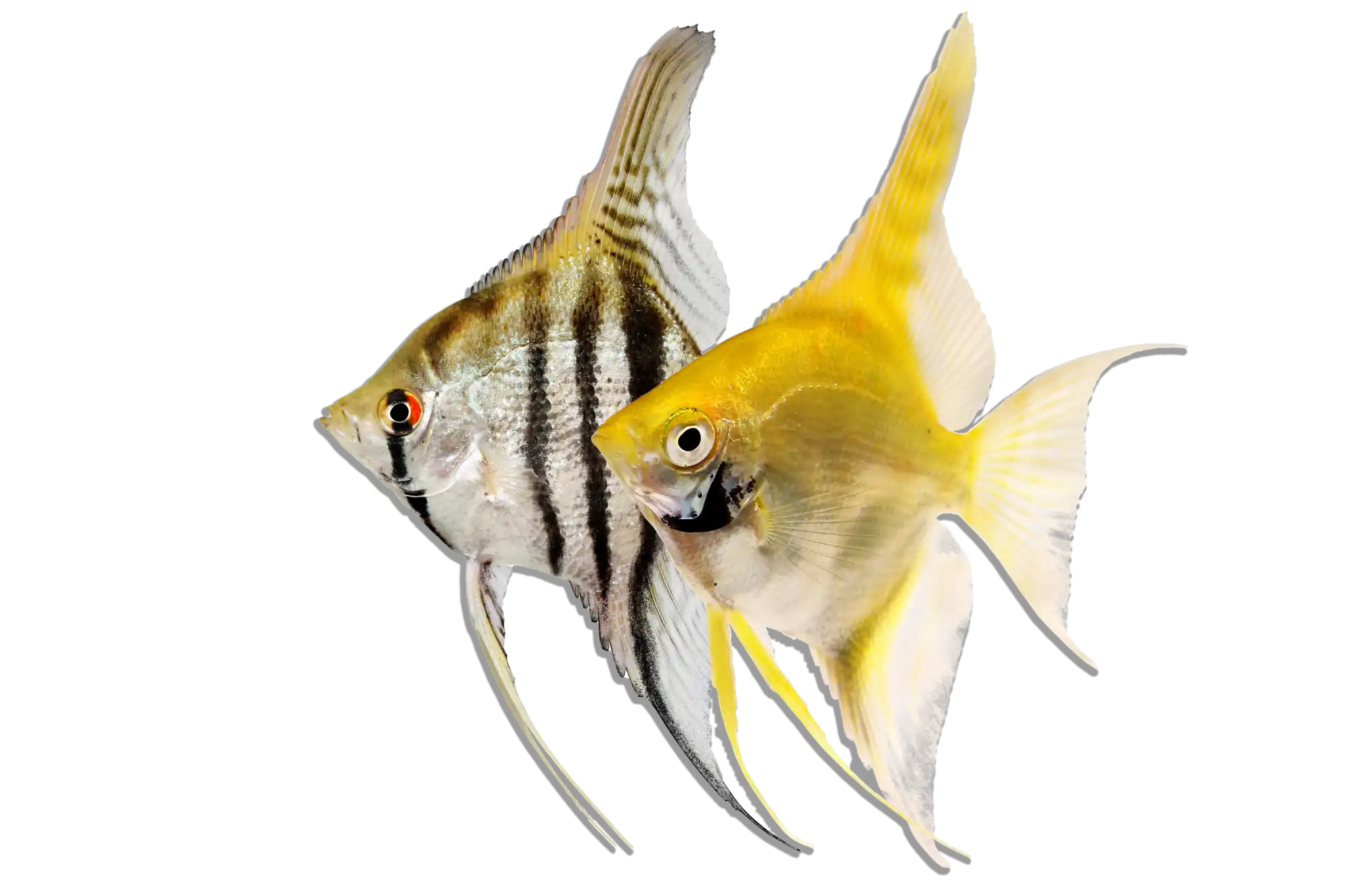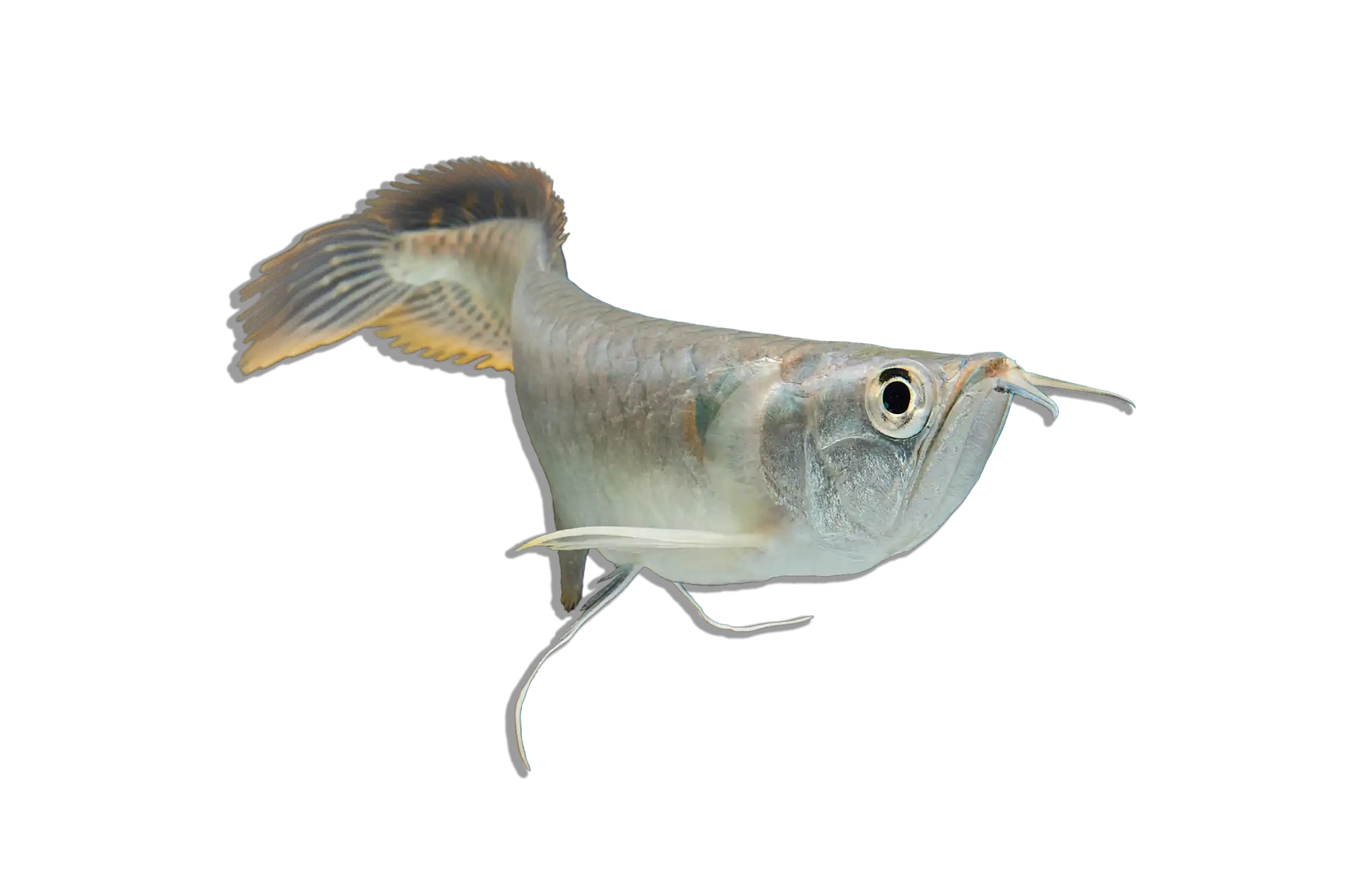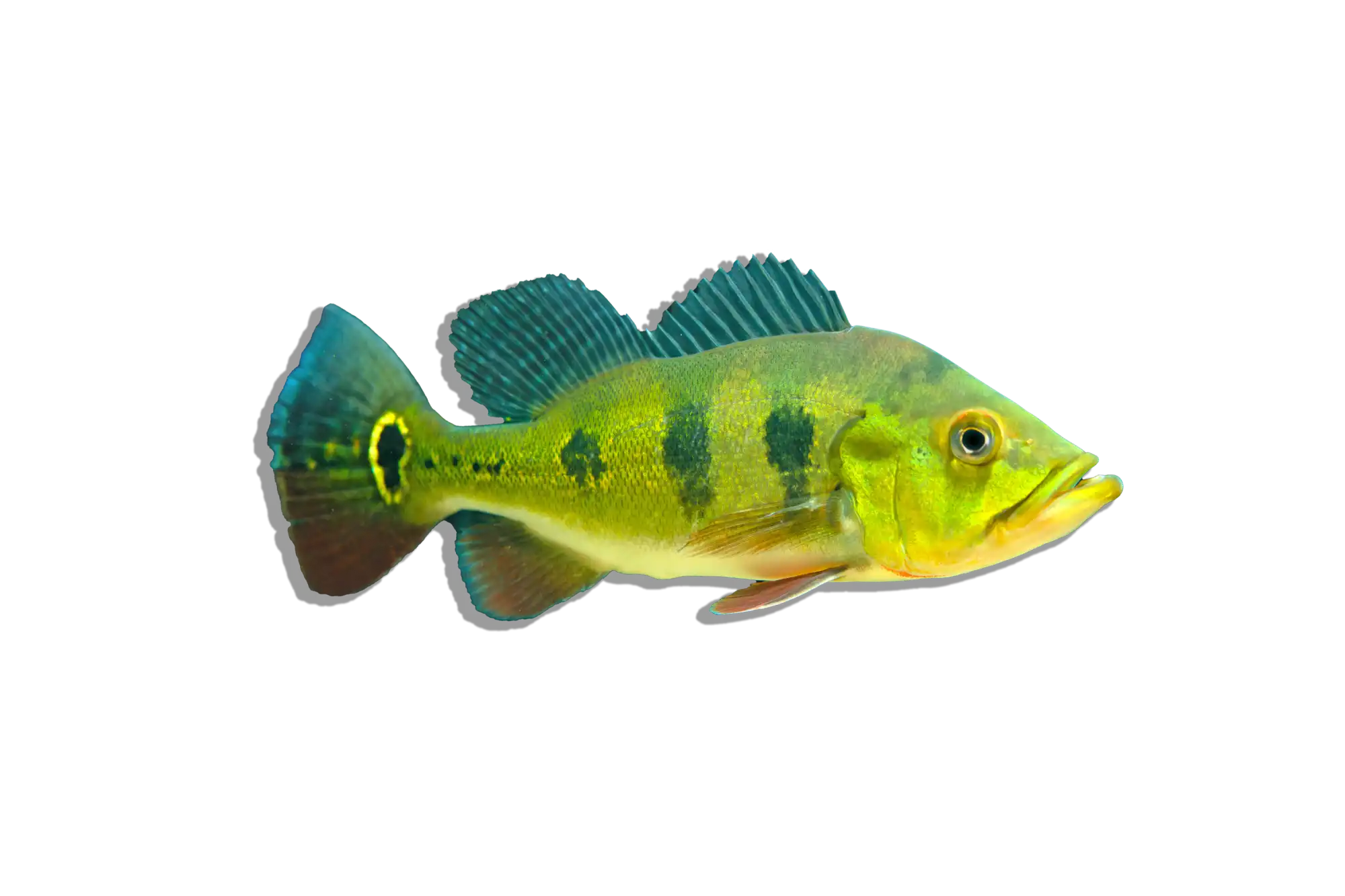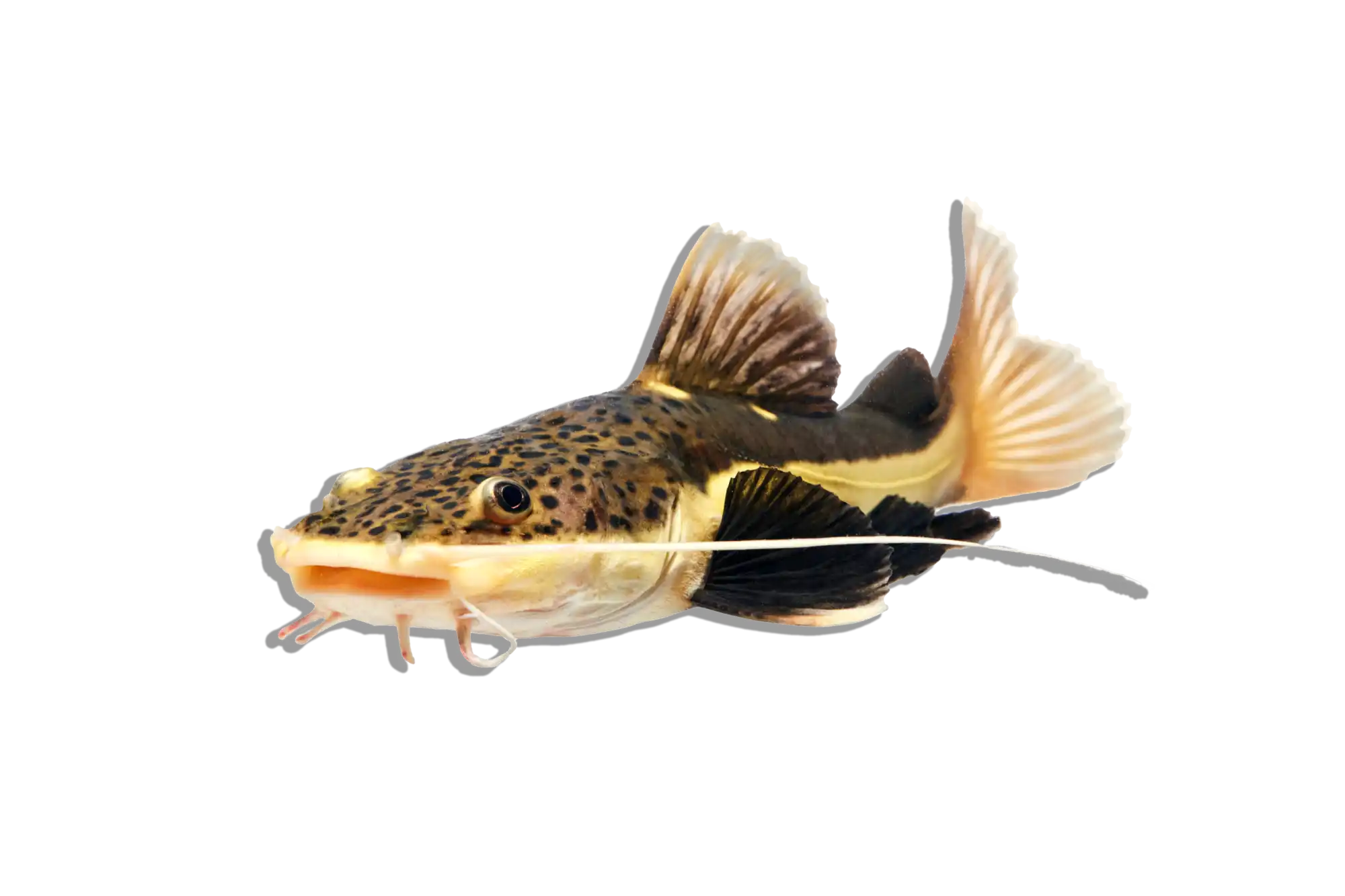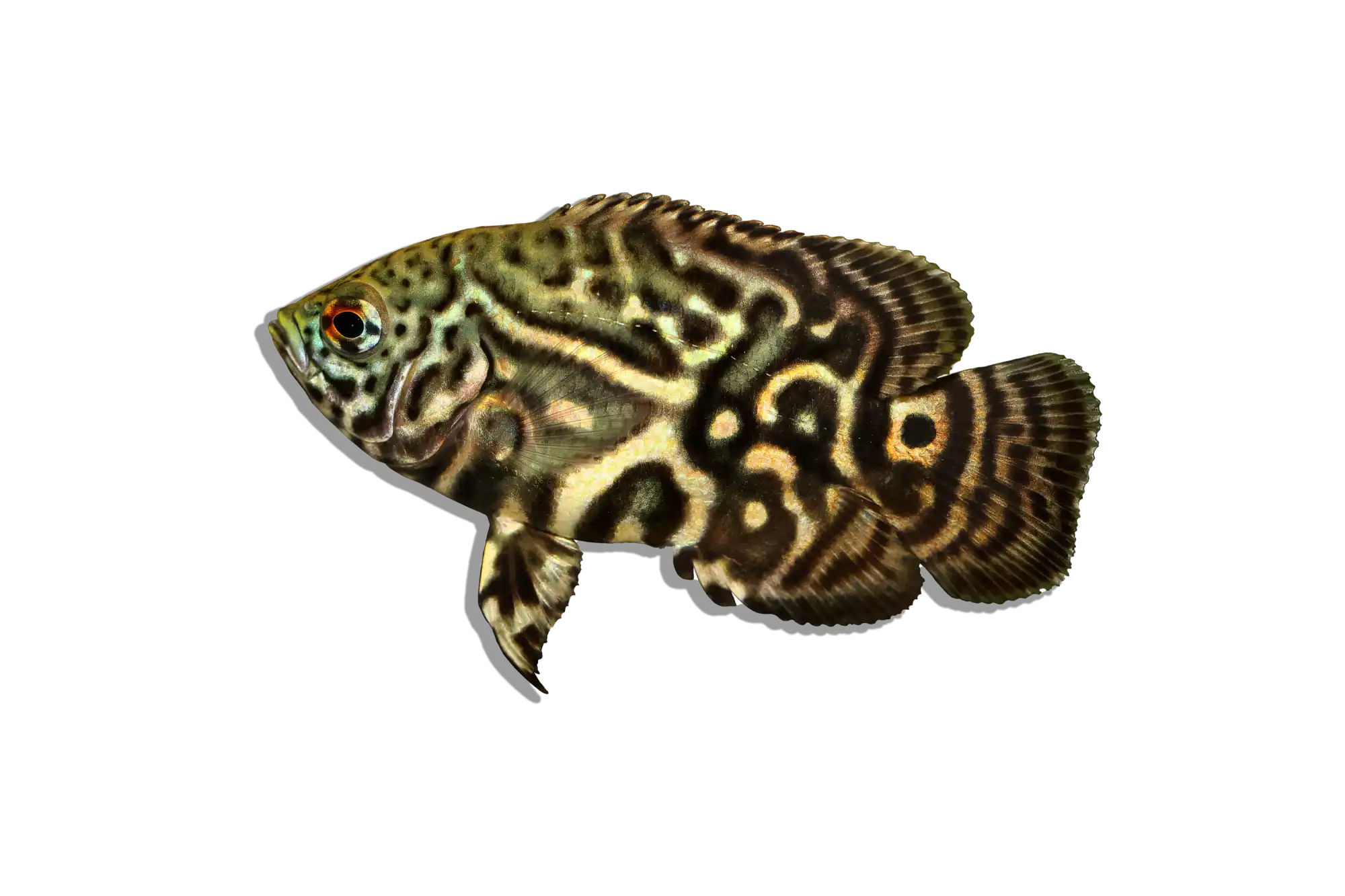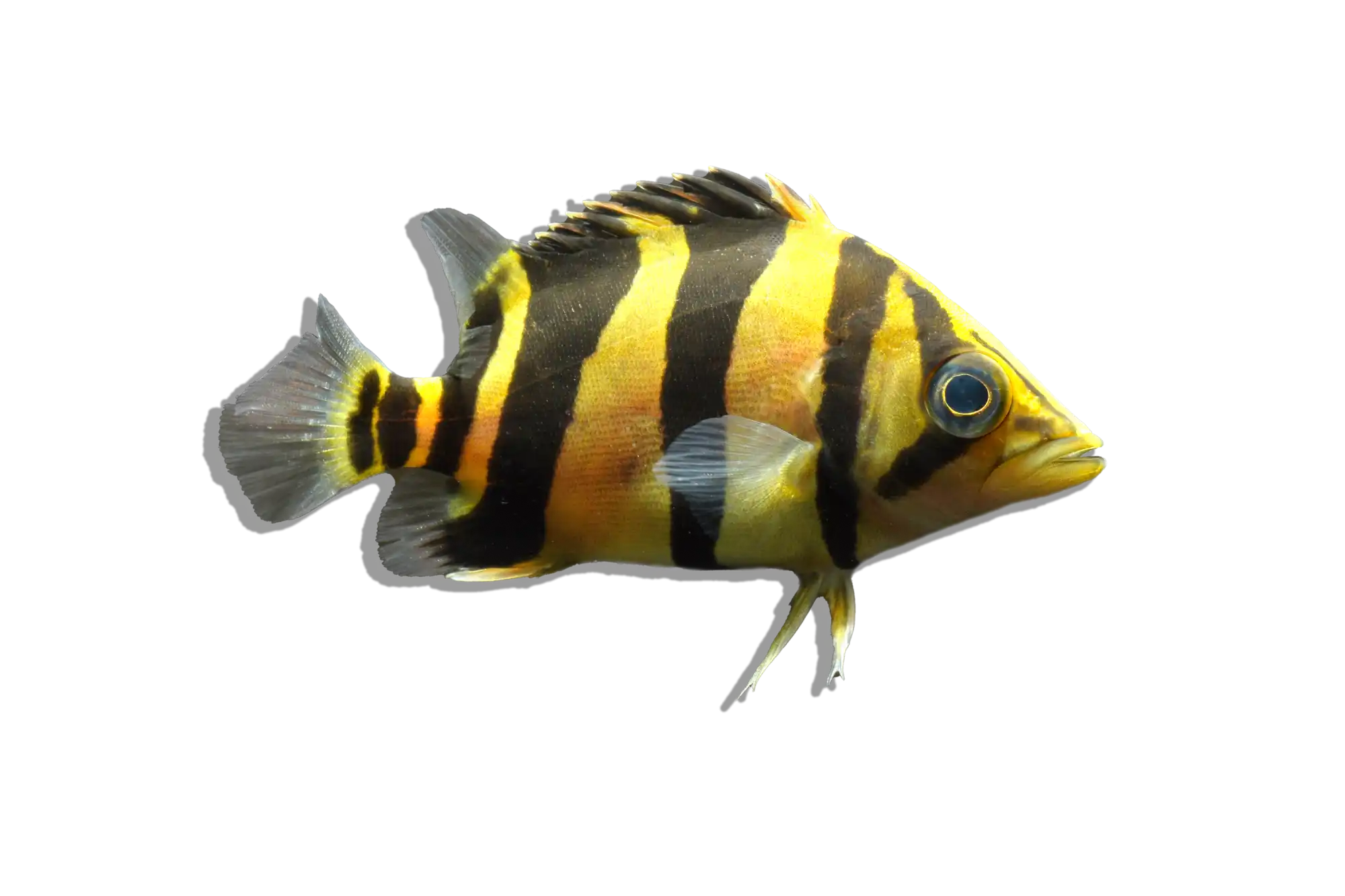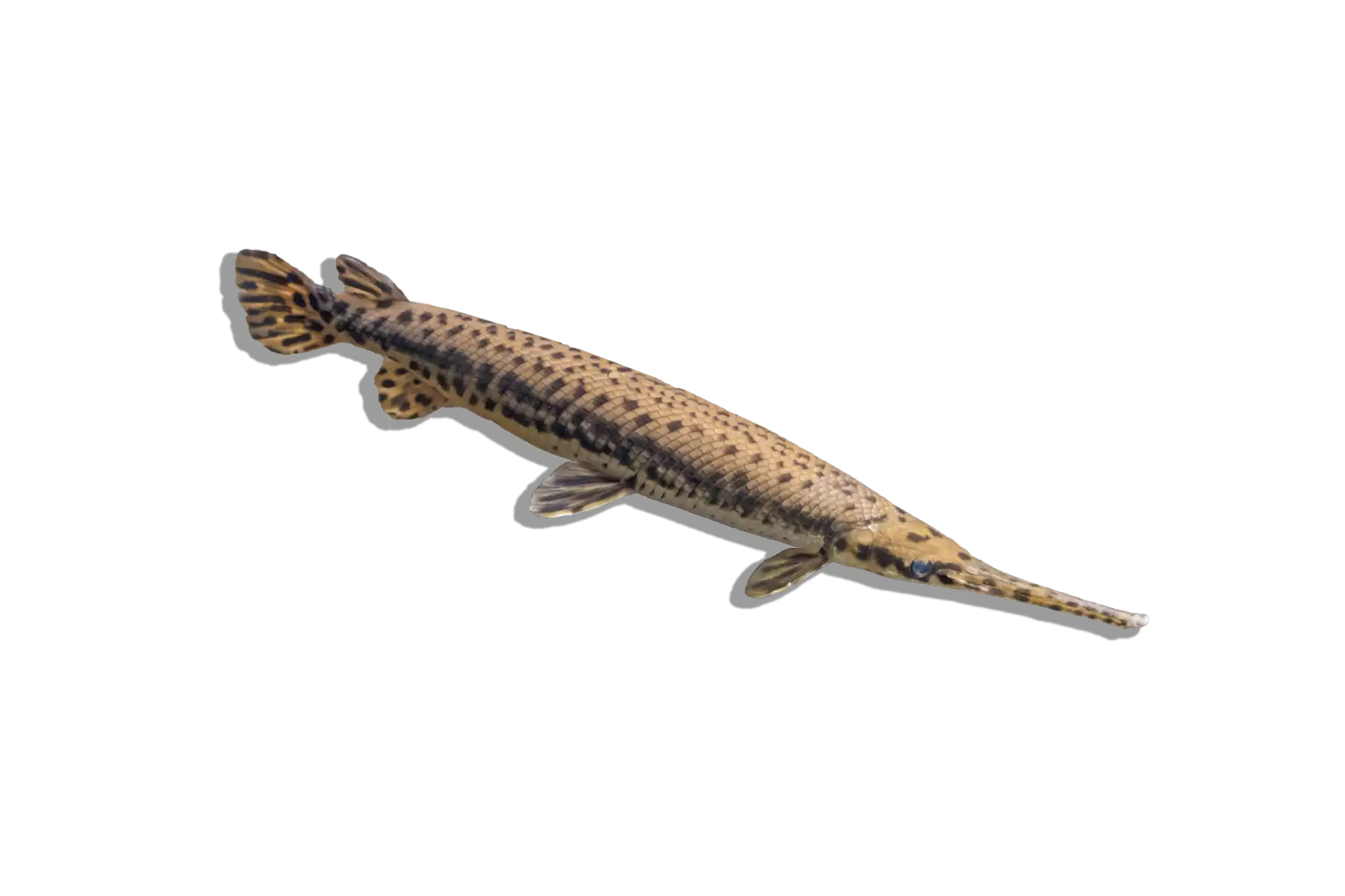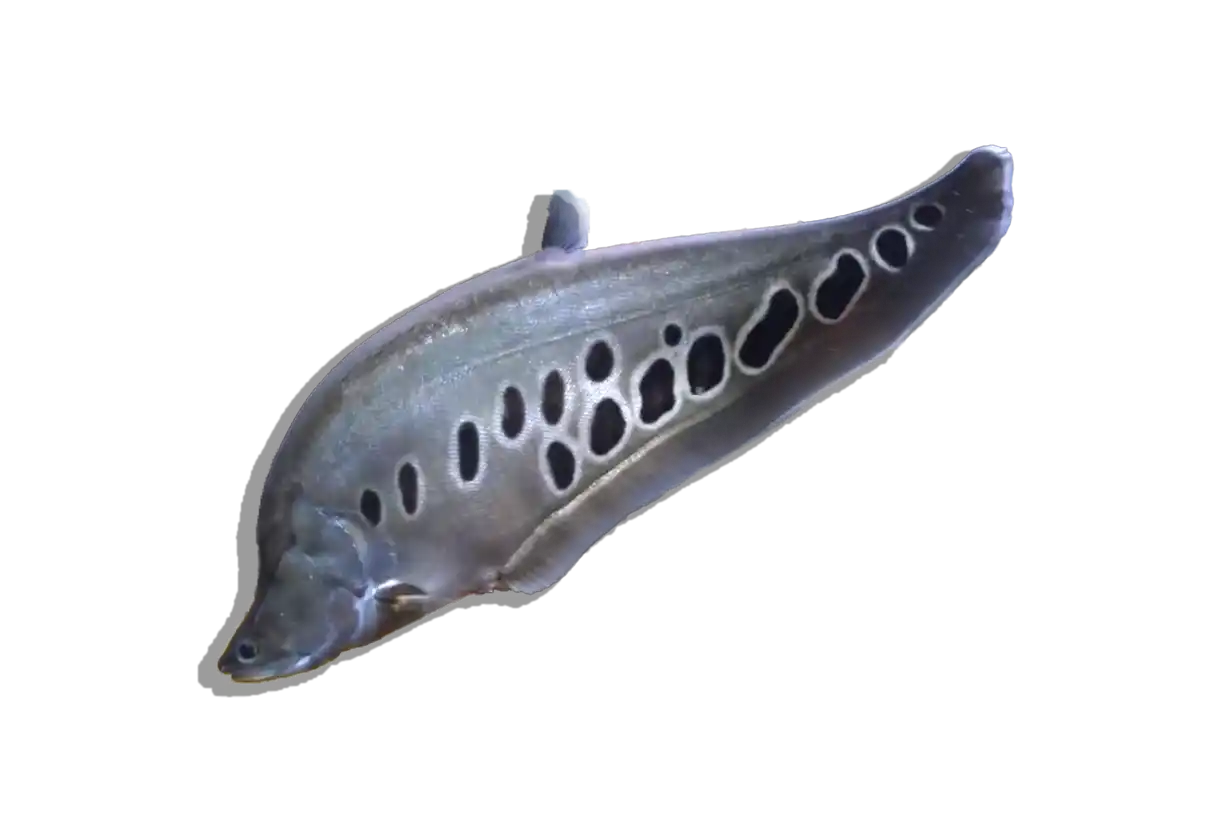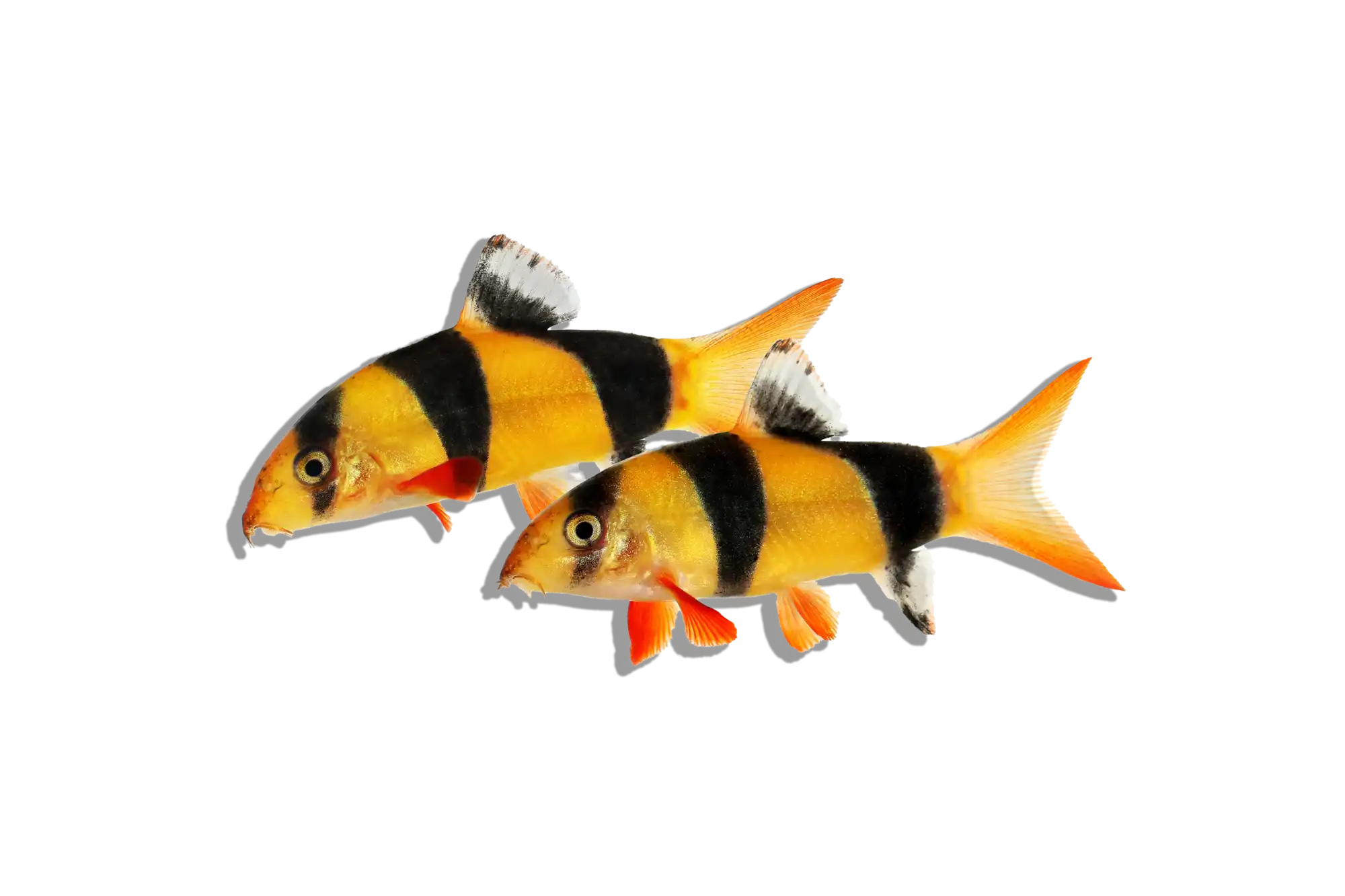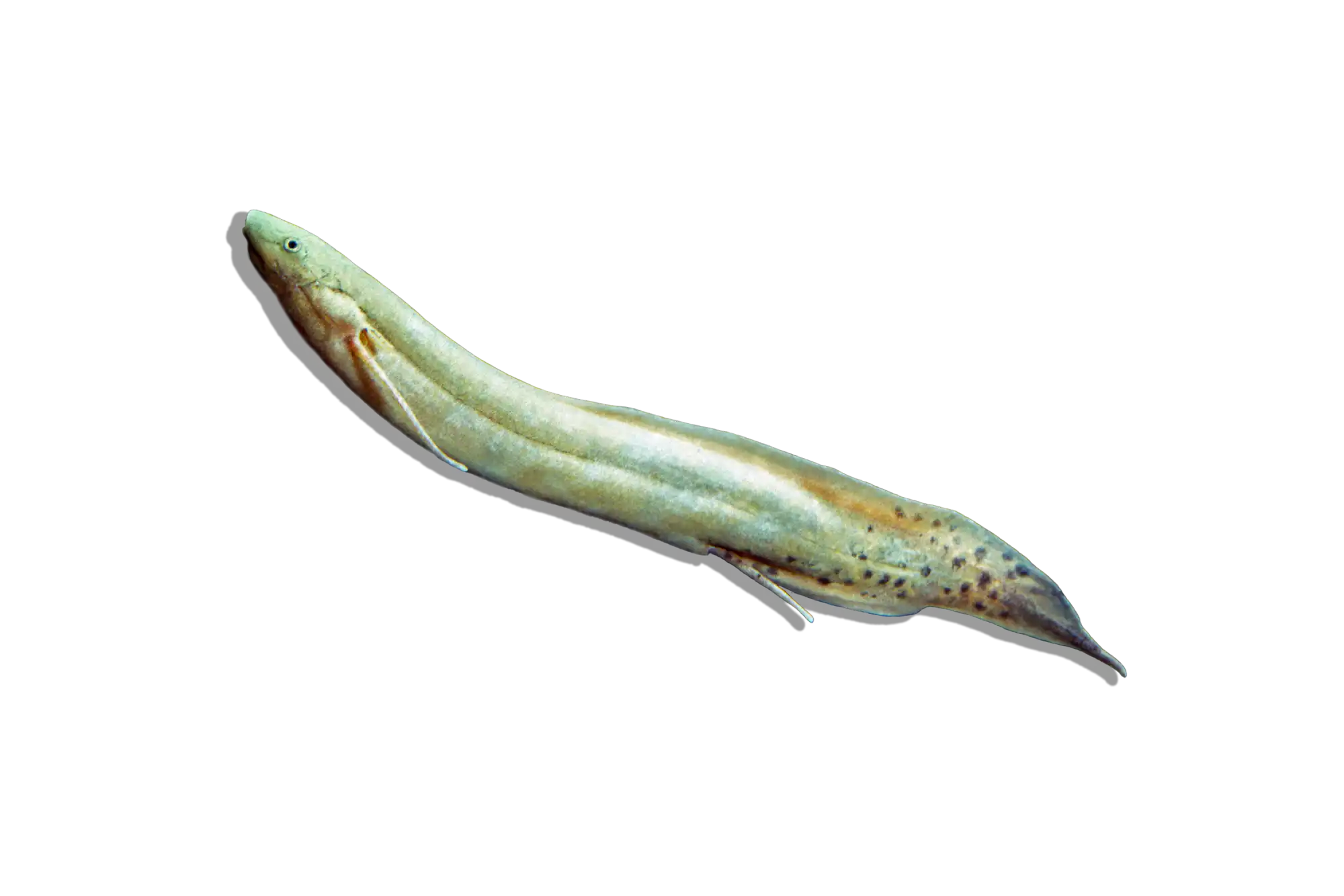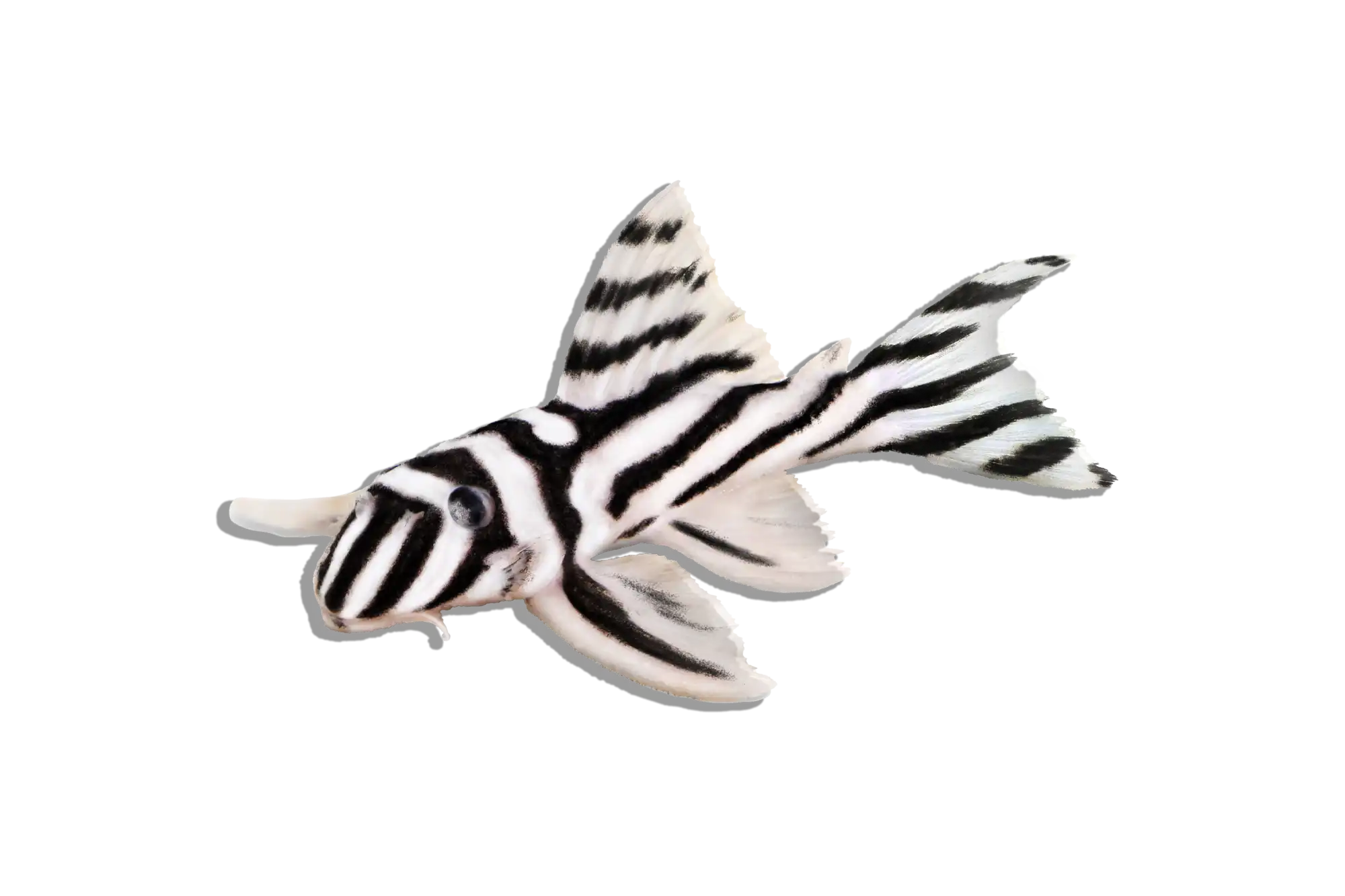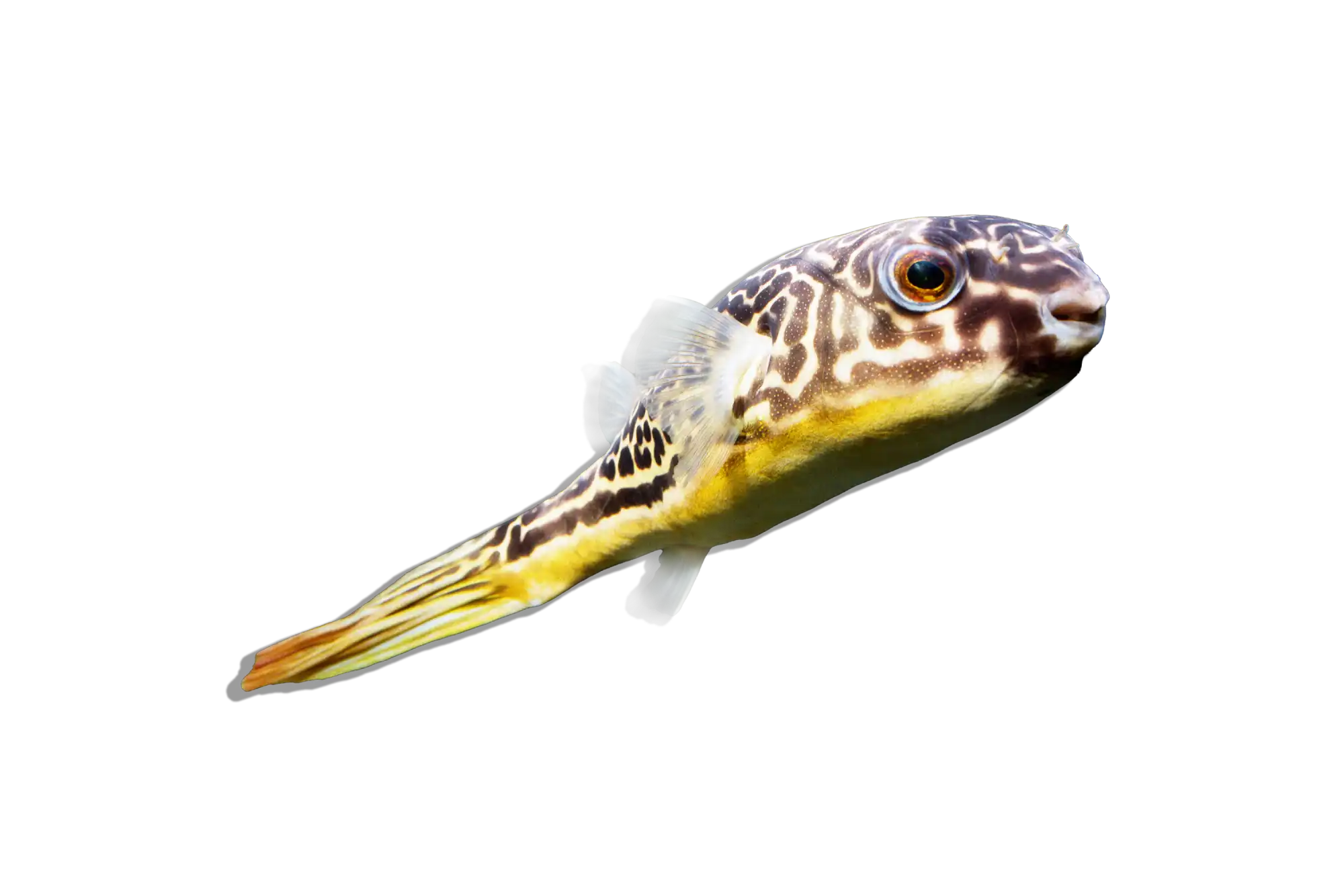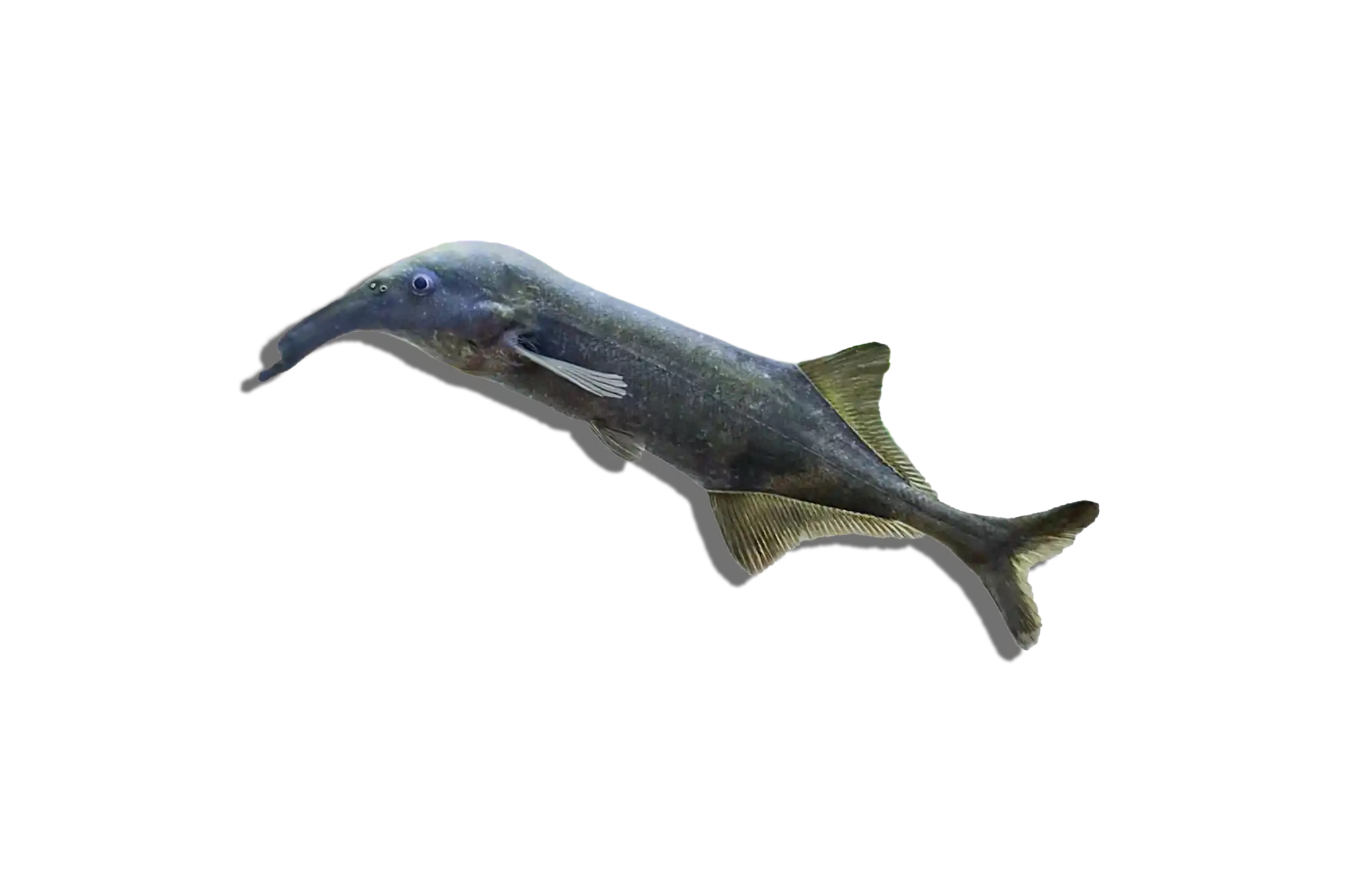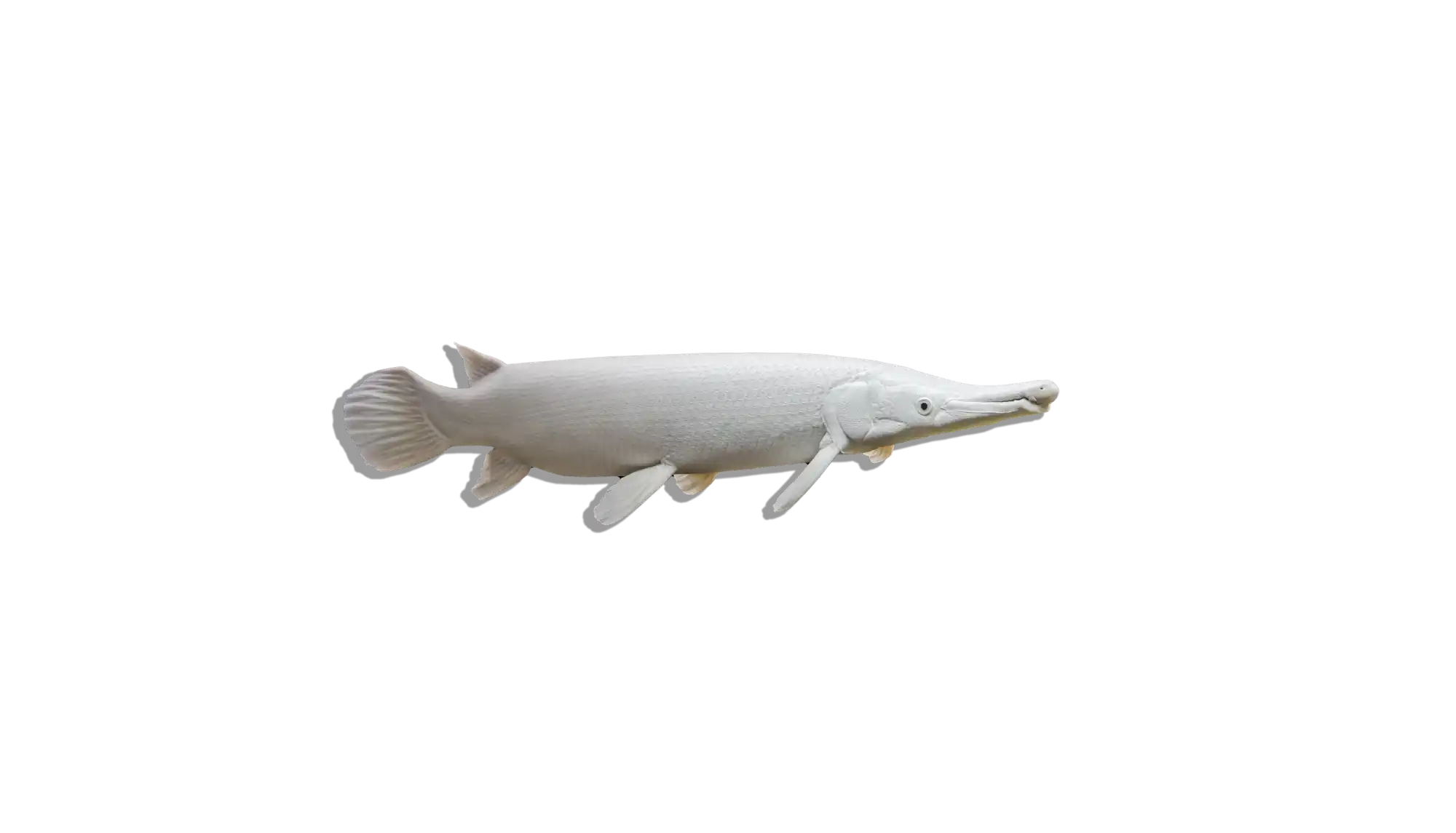Description
Common Name: Giant Featherback Knifefish
Scientific Name: Chitala lopis
Other Names: Indonesian Featherback, Clown Featherback
The Giant Featherback Knifefish is one of the largest knifefish species, known for its elongated, laterally compressed body and distinct wave-like swimming motion. Unlike many other knifefish, Chitala lopis grows to a massive size and is a powerful predator in its natural habitat. Its body is typically silver-gray with a darker dorsal region, and it lacks the prominent spots seen in its close relative, the Clown Knifefish (Chitala ornata). This species is rare in the aquarium trade due to its enormous size and specialized care requirements.
Habitat and Distribution:
Native to Indonesia and parts of Southeast Asia, the Giant Featherback Knifefish inhabits large rivers, flooded forests, and slow-moving bodies of water with soft, muddy substrates. They are often found in areas with submerged vegetation and logs, providing shelter during the day. This species is a nocturnal predator that hunts smaller fish and invertebrates under the cover of darkness.
Size and Lifespan:
This species can grow up to 60 inches (150 cm) in the wild, though captive specimens usually reach between 36-48 inches (90-120 cm). With proper care, they can live for 15-20 years, making them a long-term commitment.
Diet and Behavior:
The Giant Featherback Knifefish is a carnivorous predator, feeding on fish, crustaceans, and insect larvae in the wild. In captivity, their diet should consist of high-quality carnivore pellets, frozen or live foods such as chopped raw tilapia, earthworms, shrimp, and silversides. Avoid feeding mammalian meats, as they are difficult to digest. They are nocturnal hunters, preferring to remain hidden during the day and becoming more active at night. Despite their size, they can be shy and prefer large hiding spots like driftwood, PVC pipes, or caves.
Breeding and Reproduction:
Breeding Chitala lopis in captivity is nearly impossible due to their large size and specific environmental requirements. In the wild, they migrate to flooded areas during the rainy season for spawning. They are known to be egg layers, with males guarding the nest and fry. Successful breeding in captivity would require a massive tank or pond setup with controlled seasonal variations.
Aquarium Care and Tank Requirements:
A minimum of 500 gallons is required for juveniles, with fully grown adults needing custom-built aquariums or indoor ponds of 1,500+ gallons. Their ideal tank setup includes a soft sand or fine gravel substrate, large driftwood and caves for hiding, extremely strong filtration to manage their high bioload, moderate to strong water flow to mimic river currents, and dim lighting to accommodate their nocturnal nature. A secure lid is necessary, as they are known to be powerful jumpers.
Ideal Tank Mates:
Due to their size and predatory nature, only large, robust fish should be housed with the Giant Featherback Knifefish. Suitable tank mates include Arowanas, Pacu, Datnoids, Giant Gouramis, Large Bichirs, and Peacock Bass. Avoid small fish, as they will be seen as food, and overly aggressive species that may harass the knifefish.
Difficulty Level:
Advanced. This species requires a massive tank or indoor pond, a high-protein diet, and a secure setup to prevent escapes and injury.
Water Parameters:
- Temperature: 75-82°F (24-28°C)
- pH: 6.5-7.5
- General Hardness (GH): 4-12 dGH
- Carbonate Hardness (KH): 3-8 dKH
- Ammonia: 0 ppm
- Nitrite: 0 ppm
- Nitrate: <20 ppm (regular water changes required)
Additional Information:
- Their wave-like swimming motion is mesmerizing to watch, making them a unique centerpiece fish.
- They are shy and require large hiding places to feel secure in an aquarium environment.
- Due to their predatory nature, tank mates must be chosen carefully to prevent aggression or stress.
The Giant Featherback Knifefish is an extraordinary species that requires extensive space and specialized care. It is best suited for expert aquarists with the proper resources to maintain a large-scale predator aquarium or indoor pond.

